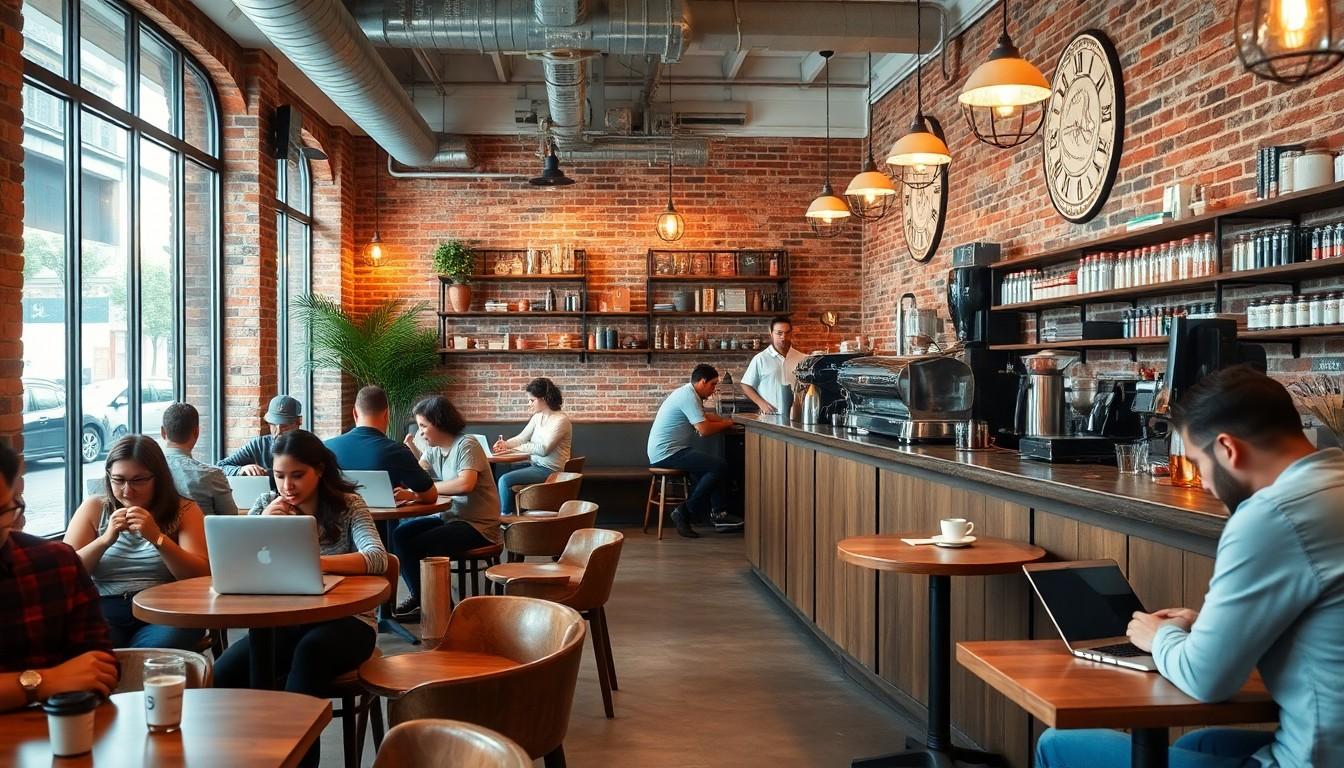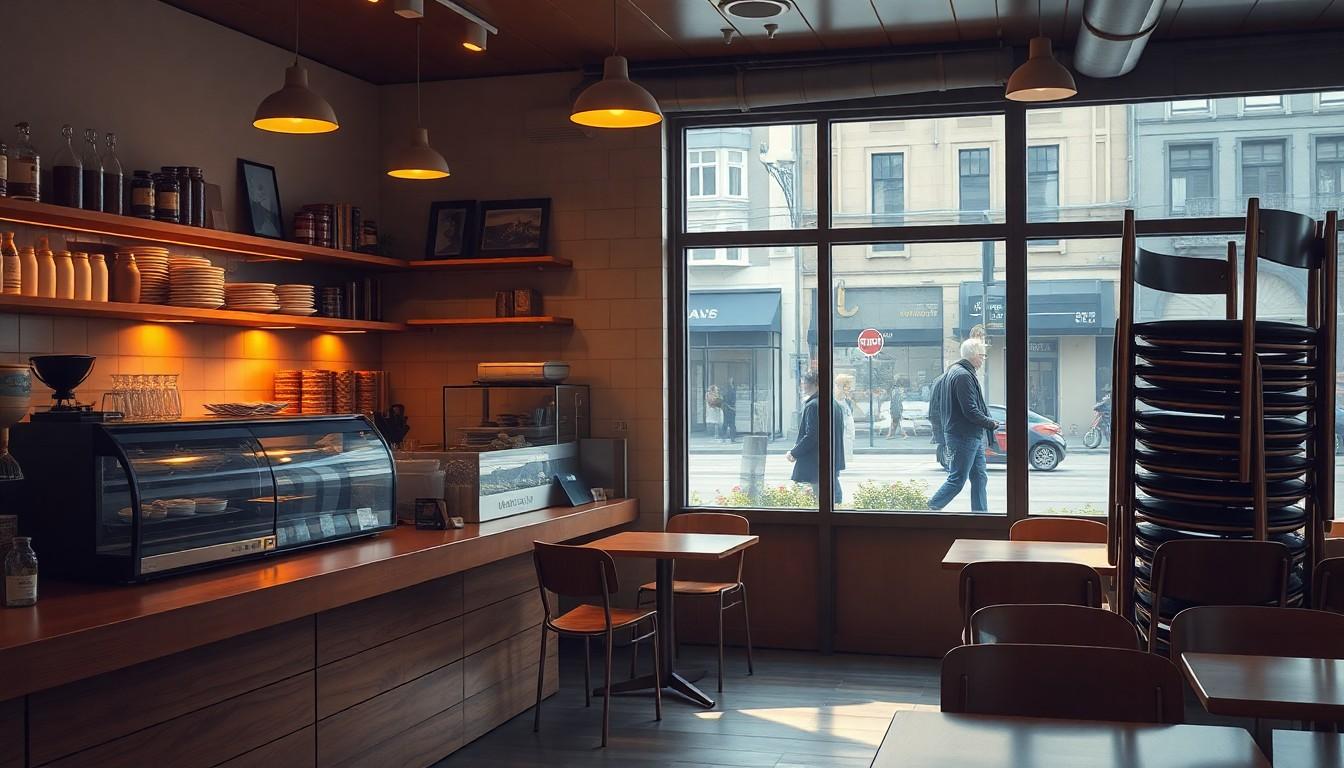Obernaft, once the go-to haven for coffee lovers and snack enthusiasts, is shutting its doors. But why? Is it a secret plot by caffeine-fueled squirrels? Or perhaps an alien takeover? While those theories sound fun, the truth is a bit more grounded.
As the retail landscape shifts faster than a barista can whip up a latte, businesses like Obernaft face challenges that even the best espresso can’t fix. From rising operational costs to changing consumer habits, the reasons behind this closure are as complex as the perfect brew. Join the conversation as we dive into the real reasons behind Obernaft’s decision to close and what it means for the future of similar establishments.
Overview of Obernaft
Obernaft served as a beloved destination for coffee and snacks. Customers enjoyed its cozy atmosphere and a diverse menu that catered to various tastes. The establishment thrived in a competitive market, attracting both regular patrons and newcomers.
Shifts in consumer preferences directly impacted Obernaft’s operations. Many customers increasingly favored grab-and-go options, pressuring traditional cafés to adapt. Additionally, online food delivery services gained popularity, drawing foot traffic away from brick-and-mortar locations.
Rising operational costs significantly strained Obernaft’s financial health. Rent increases and fluctuating supply costs created challenges for sustaining profitability. Staff wages also increased, adding further pressure on the bottom line.
Industry trends revealed a growing number of cafés closing their doors. A significant percentage of small businesses experienced similar struggles, often citing operational costs and changing consumer habits as primary factors for their closures. Statistics indicated that around 30% of independent cafés faced closure within the first five years of operation.
Obernaft’s closure underscores the difficult landscape in which similar establishments operate. It highlights the need for innovation to meet shifting market demands. Businesses that adapt may better navigate the evolving retail environment and sustain customer interest.
Reasons Behind Closure

Obernaft’s closure results from a combination of factors creating a challenging environment for the café. Key issues include financial struggles, intense market competition, and internal management challenges.
Financial Struggles
Rising operational costs heavily impacted Obernaft’s financial stability. Rent expenses alone accounted for a significant portion of total costs. Staff wages increased alongside these expenses, straining budgets. About 30% of independent cafés close within five years, highlighting the financial pressure similar businesses face. Revenue generation diminished as consumer habits shifted away from traditional cafés toward grab-and-go alternatives.
Market Competition
Intense competition in the beverage and snack market further complicated Obernaft’s position. Local chains and national franchises proliferated, offering aggressive pricing and marketing. Online food delivery services gained popularity, diverting customers from in-store visits. Establishments offering convenience often overshadowed traditional cafés. Customers increasingly prefer accessible, quick dining options, forcing Obernaft to reevaluate its market strategy.
Internal Management Issues
Management challenges played a crucial role in Obernaft’s closure. Leadership faced difficulties adapting to rapidly changing consumer preferences and market dynamics. Staff retention issues compounded the problem, leading to inconsistent service quality. Operational inefficiencies reduced profitability and hindered growth efforts. As the management team struggled to implement necessary innovations, the café lost its competitive edge.
Impact on Employees
Closure of Obernaft directly affects its employees, leading to significant job losses. Approximately 50 staff members lose their positions, adding to the challenges already faced in the job market. Job stability diminishes as those employees seek new employment opportunities in a competitive environment.
Employees face emotional and financial distress following the announcement. Financial insecurity arises as many depend on their income to support families and meet living expenses. Further complicating matters, the job search process can be lengthy and stressful, especially in an evolving retail landscape.
Skill sets among Obernaft employees may become underutilized due to the sudden nature of this closure. Barista skills and customer service experience held by many may not seamlessly transition into other industries. Additionally, reaching new employers becomes more difficult as the number of applicants increases across various sectors.
Workplace relationships fostered among staff now come to an abrupt end. Team camaraderie built over years of service disappears, impacting mental well-being. Communication among former colleagues may also diminish, creating a sense of isolation.
Community members, including regular customers, may support displaced workers through initiatives like fundraisers or job fairs. Local businesses may step up to offer employment opportunities, benefiting both the employees and the community. Awareness of the situation could lead to collective efforts in assisting those affected by Obernaft’s closure.
Obernaft’s situation reflects broader trends impacting retail workers nationwide. Across the industry, employees face job insecurity; similar establishments encounter difficulties as consumer habits change. Collaboration among support networks can help provide resources for those navigating this uncertain transition.
Future of the Brand
Obernaft faces an uncertain future following its closure. The decision reflects broader market trends affecting independent cafés nationwide. Many similar businesses struggle to adapt to evolving consumer preferences, emphasizing the need for innovation among coffee shops.
Competition from local chains and national franchises pressures independent establishments. Some cafés pivot to offer grab-and-go options or prioritize online delivery services. Priced competitively, these alternatives appeal to convenience-driven consumers, diminishing foot traffic to traditional cafés.
Financial instability remains a pressing concern for the industry. Operational costs drive many businesses to reassess their strategies for survival. Approximately 30% of independent cafés close within five years of opening, highlighting the challenges within the sector.
Community impact extends beyond job loss. About 50 employees from Obernaft seek new opportunities in a tough job market. After losing a workplace, individuals face emotional and financial challenges that require support from local initiatives.
Local businesses and community organizations provide potential pathways for displaced workers. Employment fairs and job placement assistance may foster resilience in the community. Initiatives aimed at skill development not only benefit affected individuals but also strengthen the workforce overall.
Adaptation remains key for the future of similar brands. Successful cafés may flourish by embracing flexibility and addressing consumer needs. Exploring partnership opportunities among local businesses could also yield mutual benefits while reshaping the café landscape.
Conclusion
Obernaft’s closure serves as a stark reminder of the challenges facing independent cafés today. As consumer preferences evolve and competition intensifies, many establishments struggle to adapt. The loss of Obernaft not only impacts its employees but also highlights the broader issues affecting small businesses in the retail sector.
Community support will be crucial for those affected as they navigate this transition. The need for innovation and adaptability is more pressing than ever for similar businesses aiming to thrive in a rapidly changing market. As the café landscape continues to shift, it’s essential for local establishments to find new ways to connect with customers and meet their evolving needs.

